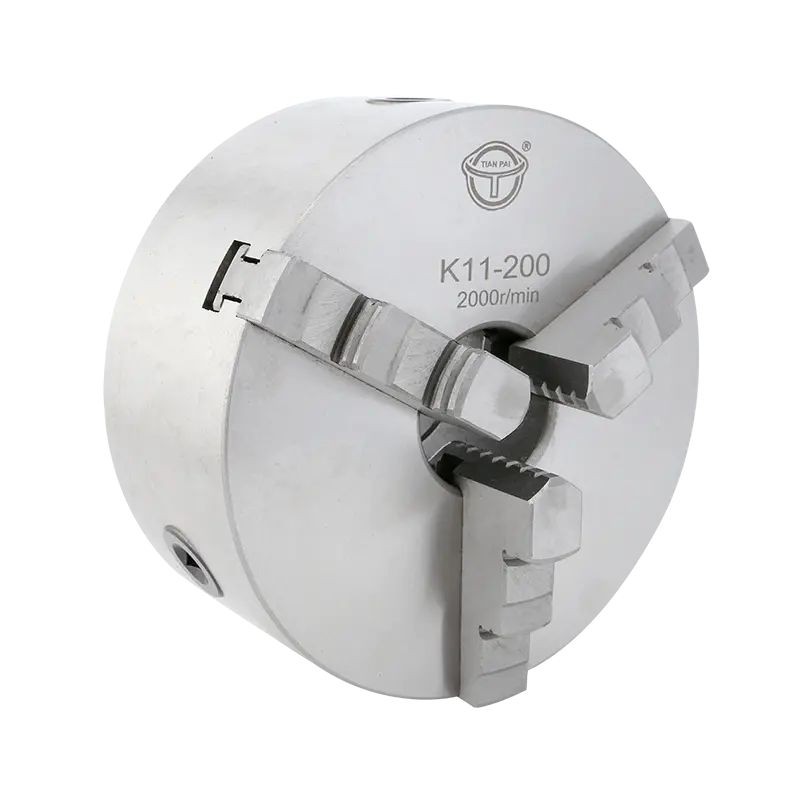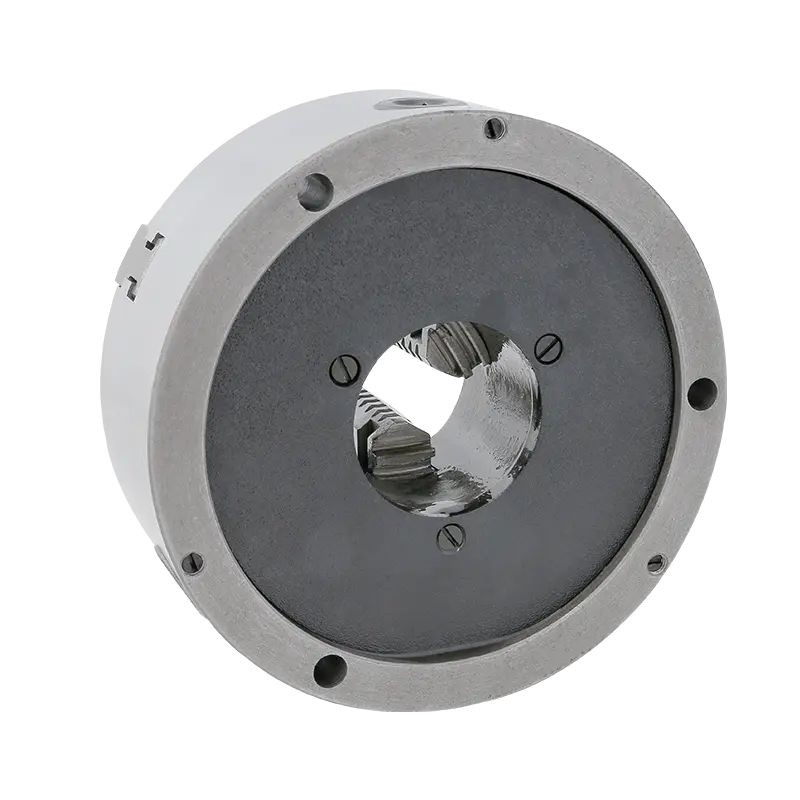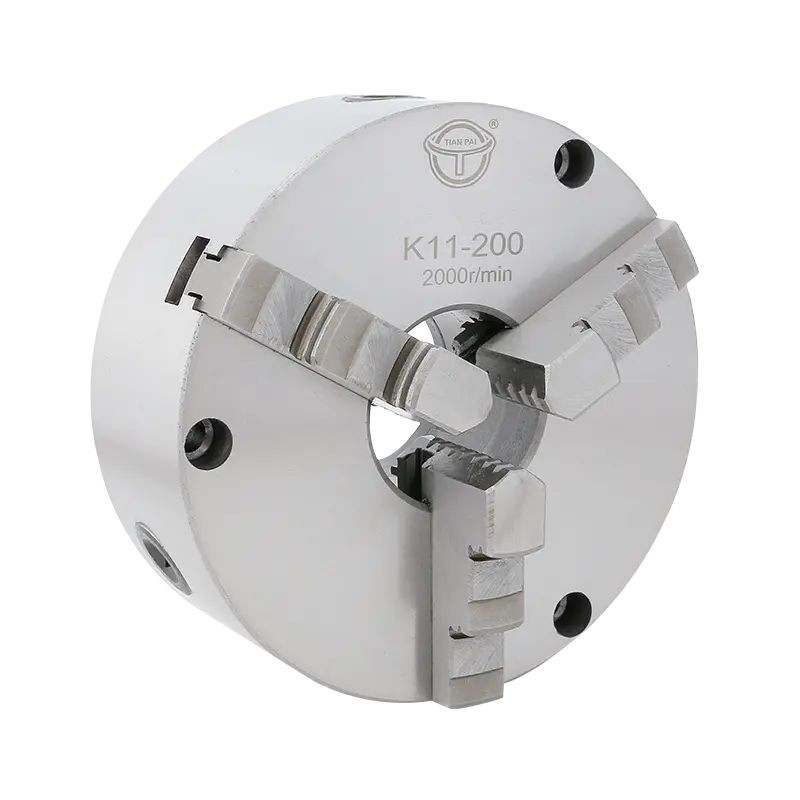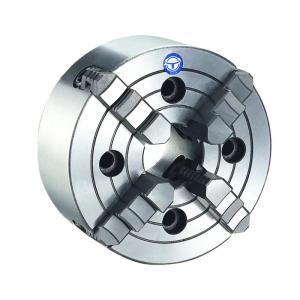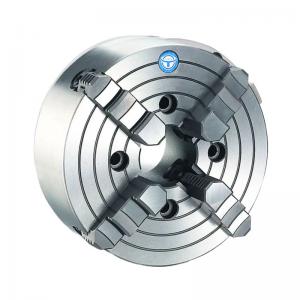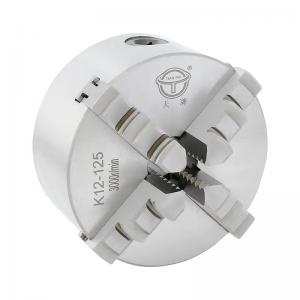K11 Type Three-jaw Self-centring Chucks Cylinder Center mounting
- Category: Self-Centering Chuck Structure
- Product description:OEM/ODM Custom Self-Centring Chucks Wholesalers Sales Three Jaw Self-Centring Chucks. The 3-jaw self-centering chuck is a versatile and essential tool. Known for its ability to securely hold cylindric
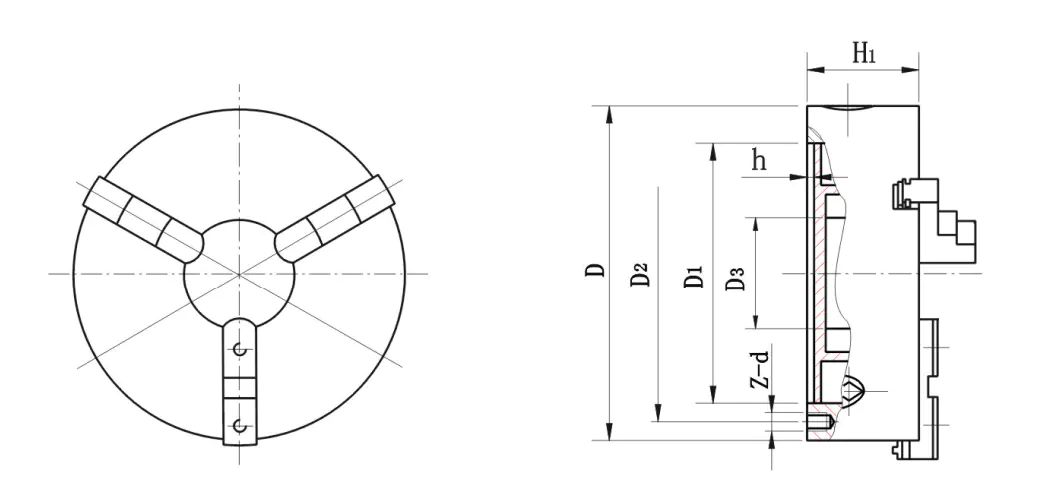
|
Size(D)
|
D1
|
D2
|
D3
|
H1
|
h
|
Z-d
|
Max.input torque (N·m)
|
Max.Speed(R/min)
|
Net WT.
|
| 80 | 55 | 66 | 16 | 50 | 3.5 | 3-M6 | 40 | 4000 | 1.9 |
| 100 | 72 | 84 | 22 | 55 | 3.5 | 3-M8 | 60 | 3500 | 3.2 |
| 125 | 95/92 | 108 | 30 | 58 | 4 | 3-M8 | 100 | 3000 | 5 |
| 130 | 100 | 115 | 30 | 60 | 4 | 3-M8 | 100 | 3000 | 5.6 |
| 160 | 130 | 142 | 45 | 65 | 5 | 3-M8 | 160 | 2500 | 8.8 |
| 165 | 130 | 145 | 45 | 66.5 | 4.5 | 3-M10 | 160 | 2500 | 9.5 |
| 190 | 155 | 172 | 55 | 75 | 5 | 3-M10 | 250 | 2000 | 13.8 |
| 200 | 165 | 180 | 65 | 75 | 5 | 3-M12 | 250 | 2000 | 15.5 |
| 240 | 195 | 215 | 70 | 80 | 5 | 3-M12 | 320 | 1600 | 24 |
| 250 | 206 | 226 | 80 | 80 | 5 | 3-M12 | 320 | 1600 | 25.7 |
| 250A | 206 | 226 | 80 | 80 | 5 | 3-M12 | 320 | 1600 | 23.5 |
| 250C | 206 | 226 | 80 | 80 | 5 | 3-M16 | 320 | 1600 | 23 |
| 315 | 260 | 285 | 100 | 90 | 6 | 3-M16 | 400 | 1200 | 47 |
| 315A | 260 | 285 | 100 | 90 | 6 | 3-M16 | 400 | 1200 | 41 |
| 315C | 260 | 285 | 100 | 95 | 6 | 3-M16 | 400 | 1200 | 40 |
| 320 | 270 | 290 | 100 | 95 | 11 | 3-M16 | 400 | 1200 | 47.5 |
| 320C | 270 | 290 | 100 | 95 | 11 | 3-M16 | 400 | 1200 | 42 |
| 325 | 272 | 296 | 100 | 96 | 11 | 3-M16 | 400 | 1200 | 49 |
| 380A | 325 | 350 | 135 | 98 | 6 | 3-M16 | 500 | 1000 | 62 |
| 400A | 340 | 368 | 130 | 100 | 6 | 3-M16 | 500 | 1000 | 71 |
| 500A | 440 | 465 | 200 | 115 | 7 | 6-M16 | 630 | 800 | 118 |
| 630A | 560 | 595 | 260 | 130 | 8 | 6-M16 | 800 | 600 | 210 |
| 800A* | 710 | 760 | 280 | 150 | 8 | 6-M20 | 1000 | 730 | 386 |
| 1000A* | 910 | 950 | 400 | 165 | 10 | 6-M24 | 1200 | 600 | 592 |
The Function of Inner Jaw and Outer Jaw in Three Jaw Self Centering Chuck
In the realm of machining, the three-jaw self-centering chuck is a versatile and essential tool. Known for its ability to securely hold cylindrical workpieces, it relies on the presence of both internal jaws and external jaws to fulfill its functionality. These jaws play a crucial role in achieving precise centering, efficient clamping, and enhanced productivity. This essay explores how the presence of internal jaws and external jaws in a 3-jaw self-centering chuck contributes to its overall functionality.
(1)Contribution to Centering:
The primary purpose of the internal jaws and external jaws in a 3-jaw self-centering chuck is to achieve accurate centering of the workpiece. When the chuck is tightened, the internal jaws move outward and make contact with the inside diameter of the workpiece. Simultaneously, the external jaws move inward and contact with the outside diameter of the workpiece. The coordinated movement of these jaws ensures that the workpiece is precisely centered within the chuck.
By exerting equal radial forces on the workpiece from both the inside and outside, the internal and external jaws maintain concentricity. This feature is vital in achieving precise machining operations, minimizing runout, and producing high-quality finished products. The self-centering nature of the chuck significantly reduces the setup time required for aligning the workpiece, enhancing operational efficiency.
(2)Efficient Clamping:
The internal jaws and external jaws in a three-jaw self-centering chuck contribute to the efficient clamping of the workpiece. As the chuck is tightened, the jaws move radially, applying gripping force to secure the workpiece firmly. The equal and synchronized movement of the jaws ensures a balanced clamping force, minimizing any distortion or deflection of the workpiece.
The self-centering chuck's design allows for rapid clamping and releasing of the workpiece, improving productivity and reducing downtime. With just a single rotation of the chuck key or engagement of a power source, the internal and external jaws move simultaneously, facilitating quick changes between workpieces during machining operations.
(3)Versatility in Workpiece Size:
Another significant advantage of the presence of internal jaws and external jaws in a 3-jaw self-centering chuck is the versatility it offers in accommodating different workpiece sizes. The jaws are designed to adapt to various diameters, enabling the chuck to hold a wide range of cylindrical workpieces securely.
The internal jaws and external jaws can be adjusted to match the specific dimensions of the workpiece. The chuck's self-centering feature ensures that the workpiece is automatically centered regardless of its size, eliminating the need for manual adjustments and reducing setup time. This adaptability to different workpiece sizes makes the 3-jaw self-centering chuck highly efficient and suitable for various machining applications.
(4)Applications and Industries:
The functionality provided by the internal jaws and external jaws in a 3-jaw self-centering chuck makes it a valuable tool across numerous industries and machining applications. It is commonly used in turning operations, such as facing, tapering, and threading, where precise centering and secure clamping are paramount.
Additionally, the three-jaw self-centering chuck finds applications in milling, drilling, and grinding operations. Its ability to hold cylindrical workpieces securely enables operators to perform precise and intricate machining.
INQUIRY
CATEGORIES
LATEST NEWS
CONTACT US
Name:
phone:+86-576-82356788
Whatsapp:8657682356788
Email:tp@tpchuck.com
Add:Luqiao District, Taizhou City, Zhejiang Province, China.

